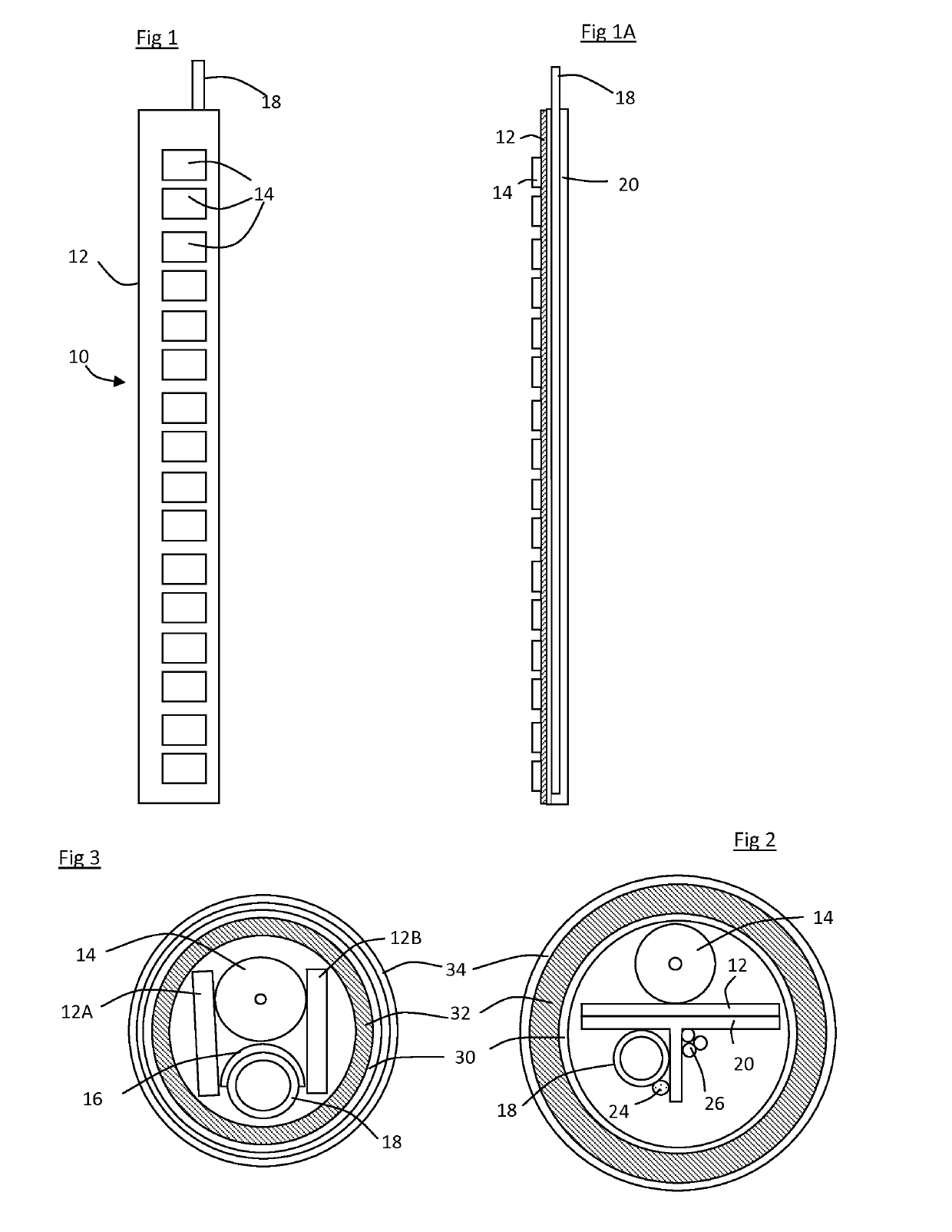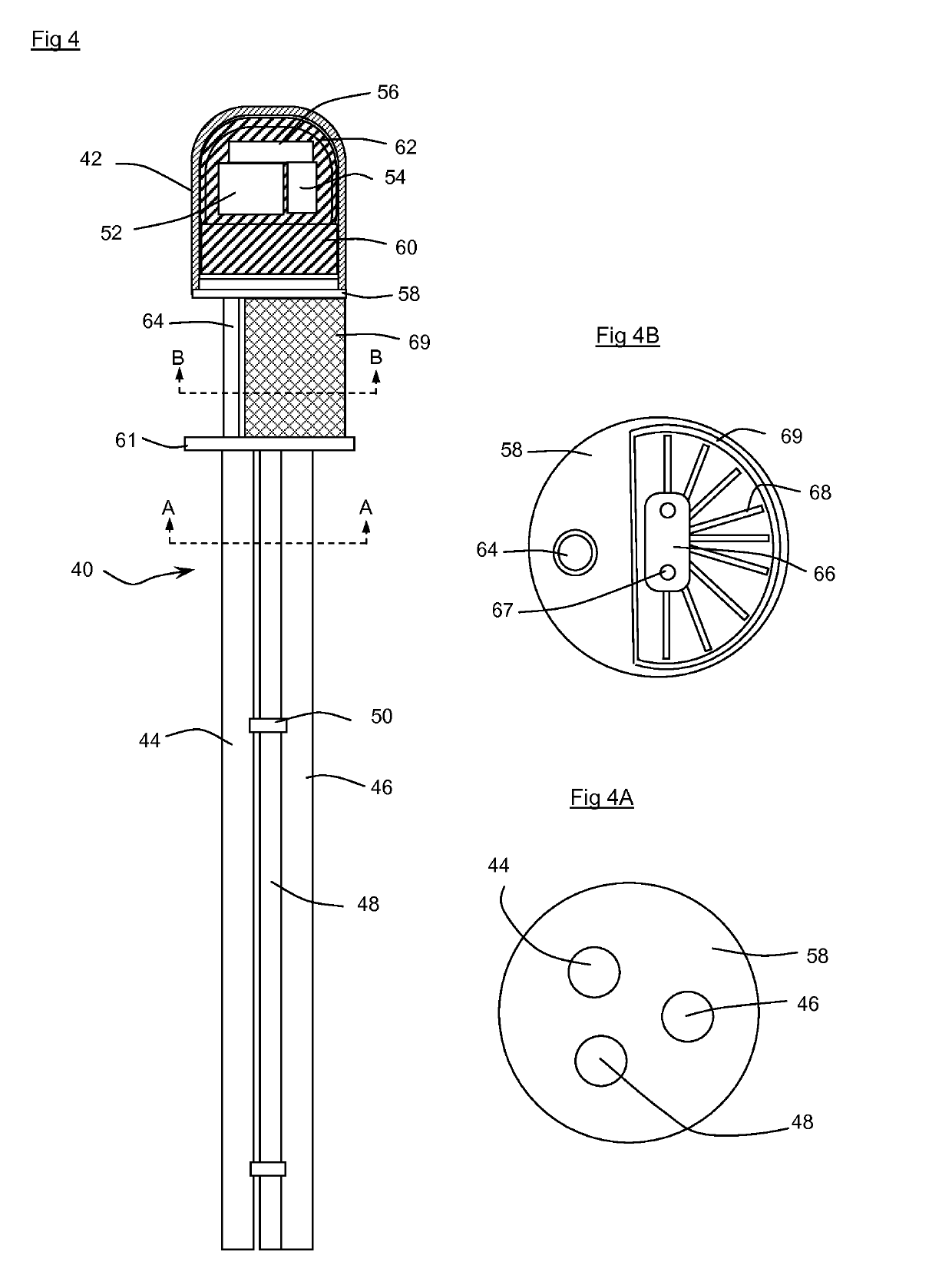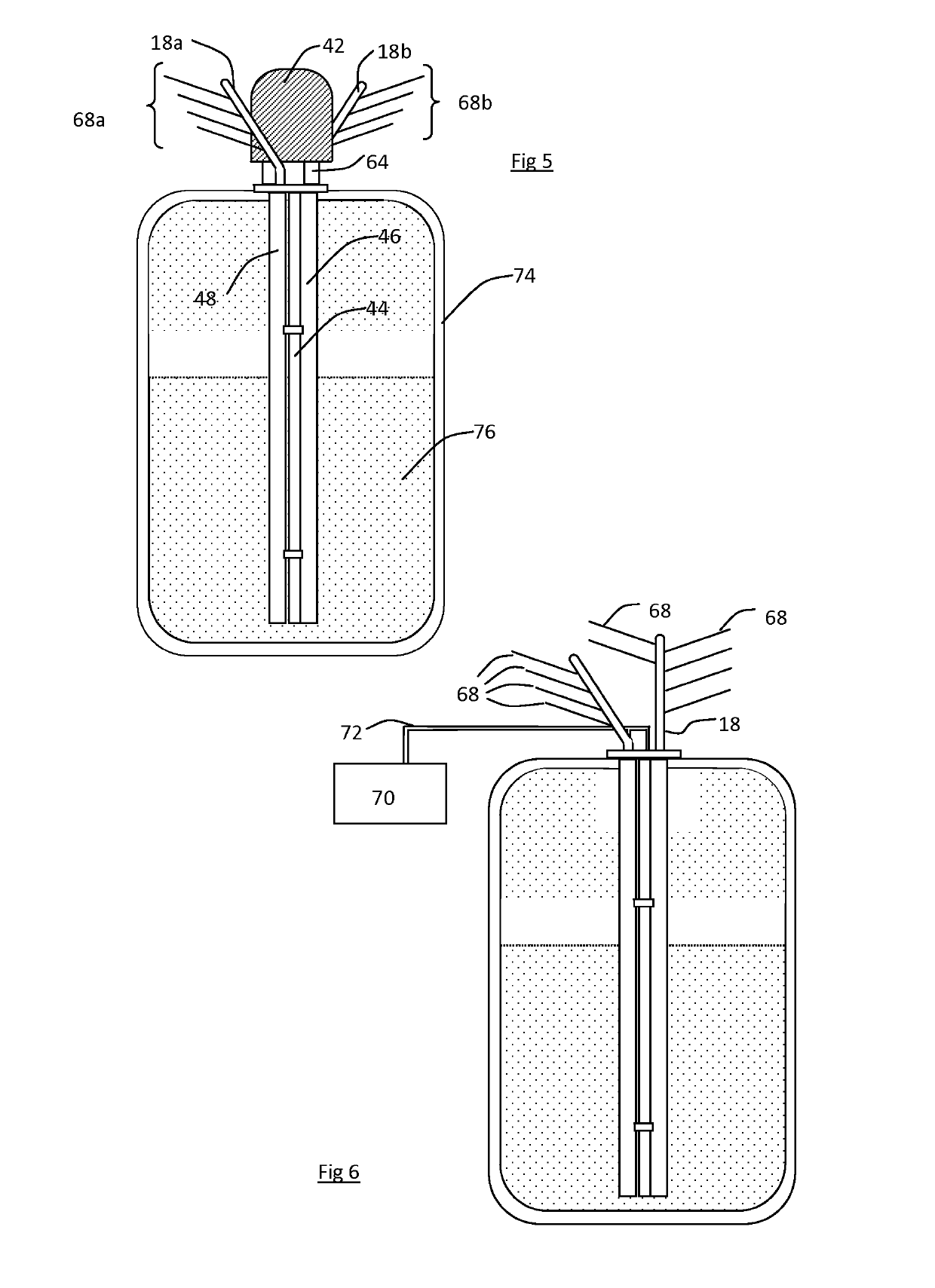Radiation detector
a technology of radiation detectors and detectors, applied in the direction of instruments, specific gravity measurement, machines/engines, etc., can solve the problems that the material used to form such panels may not be able to maintain a vacuum at high temperatures, and achieve the effect of safe use in explosive atmospheres and the most efficient removal of heat from detectors
- Summary
- Abstract
- Description
- Claims
- Application Information
AI Technical Summary
Benefits of technology
Problems solved by technology
Method used
Image
Examples
Embodiment Construction
[0043]A sectional view of an alternative embodiment of the invention is shown in FIG. 3. In this embodiment, GM tube 14 is supported on the heat pipe 18. Pad 16 is formed from Sil-Pad™ 1500ST thermally conductive elastomer to provide thermal contact between the GM tube and the heat pipe and also electrical insulation between them. Printed circuit boards 12A and 12B are mounted on either side of and electrically connected to the GM tube, and transport power, control signals and measurement signals between the GM tube and the power source, electrical control and signal processing apparatus housed within a separate housing. The high voltage supply circuit to power the GM tubes is carried on circuit board 12A, whilst the electrical components of the driving circuit are housed on board 12B. In this embodiment, insulation 32 is located between a protective plastic cover 30 and the components of the detector probe.
[0044]FIG. 4 shows an elevation of a density profiler instrument 40 accordin...
PUM
| Property | Measurement | Unit |
|---|---|---|
| freezing point | aaaaa | aaaaa |
| freezing point | aaaaa | aaaaa |
| freezing point | aaaaa | aaaaa |
Abstract
Description
Claims
Application Information
 Login to View More
Login to View More - R&D
- Intellectual Property
- Life Sciences
- Materials
- Tech Scout
- Unparalleled Data Quality
- Higher Quality Content
- 60% Fewer Hallucinations
Browse by: Latest US Patents, China's latest patents, Technical Efficacy Thesaurus, Application Domain, Technology Topic, Popular Technical Reports.
© 2025 PatSnap. All rights reserved.Legal|Privacy policy|Modern Slavery Act Transparency Statement|Sitemap|About US| Contact US: help@patsnap.com



